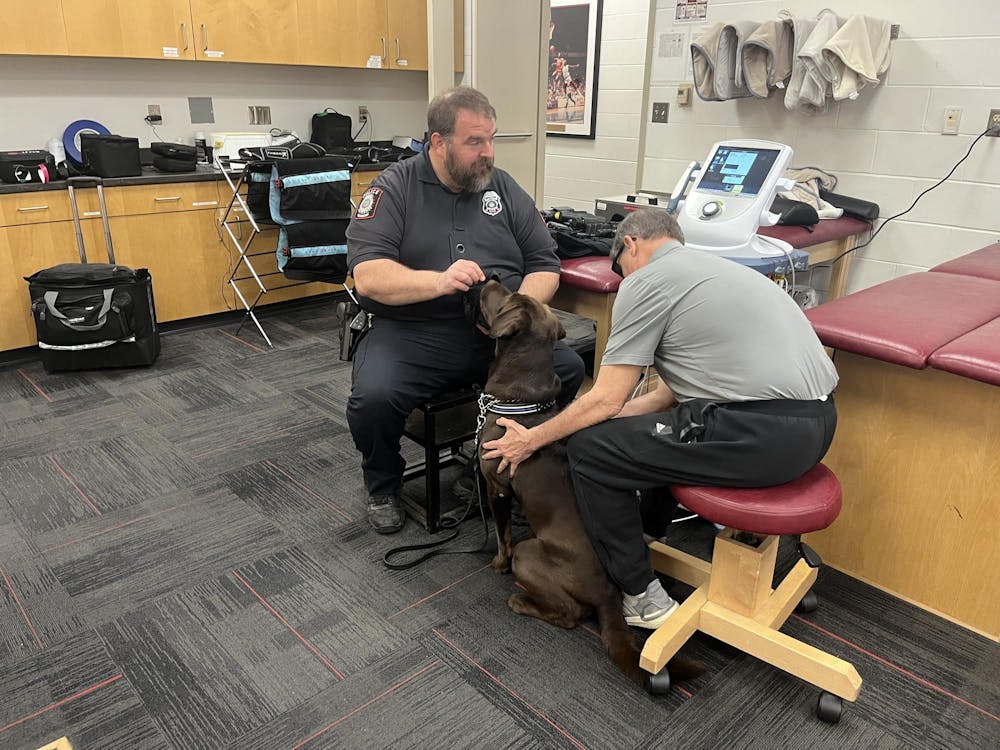IU athletic trainer Tim Garl claps his hands to his knees with excitement as his next patient appears in the room before jumping up on Garl. Indy, one of three police dogs working for the IU Police Department, began visiting Garl for low-level laser therapy treatments to help with his arthritis.
The labrador retriever has been with the IUPD for nearly five years. Indy and his handler Rob Botts are responsible for walking venues prior to large events to search for bombs and other explosive devices. Recently, Botts began to notice minor differences in Indy’s behavior.
“He worked fine because there’s that motivation to work, but the biggest thing that I was seeing was he wouldn’t get in the car,” Botts said. “So, he would get to the car, and you could tell that mentally he wanted to get in the car, but physically there was something stopping him from taking that leap.”
Botts was introduced to Garl by his coworker, officer Ryan Skaggs. Skaggs thought about seeking treatment with Garl for his former K-9 at the IUPD, Zeus, when he was experiencing arthritis in his paw. They decided to retire Zeus before this treatment was necessary.
“Since (the treatments and shots), I have not seen a limp one time,” Botts said. “He’s very active, he wants to work. He would run forever if I’d let him. When he was sore, you could tell he didn’t really want to do any of that stuff.”
In his 43 years as an athletic trainer at IU, this is Garl’s first time working with a non-human patient. During the treatment, Garl kept one hand on Indy’s back while Botts fed him a continuous stream of treats to distract him from the process. The pair tried alternative options such as a ball, but treats were the only distraction that would get Indy to sit still.
Indy’s veterinarian had already suggested low level laser therapy to accompany his monthly treatments of monoclonal antibody injections. According to Botts, these shots help the pain caused by the arthritis by reducing inflammation.
The low level laser therapy triggers a process called photobiomodulation to decrease the inflammation in areas such as tissue. The process can decrease pain levels and speed up the healing process through increasing cellular metabolism.
Indy began with three treatments a week, and after a month he transitioned to two treatments a week. Assuming he does not experience any relapses in his improvement, Garl and Botts plan to continue decreasing the number of treatments each month.
Indy is one of two explosive detection dogs in the IUPD, so his health has a significant impact on the efficacy of the program.
“I trust him with my life, and I trust everyone's life to him and his ability to do his job,” Botts said. “So, that’s why we try to keep him as healthy as possible.”




